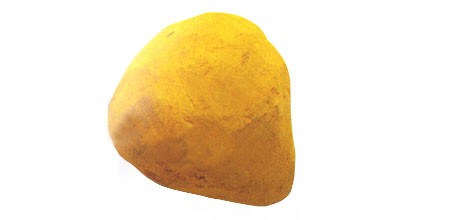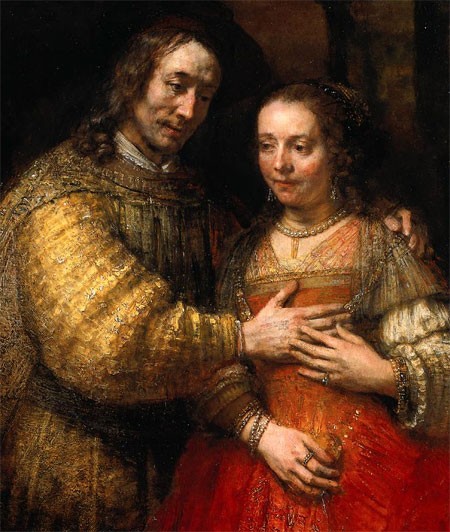History of Yellow Pigment in Painting
Many yellows have appeared throughout history in a desperate effort to find a true, bright and lightfast one including Lead Tin Yellow, Naples, Turners and chromium.

Indian Yellow Pigment
One yellow that was used throughout Europe from the 17th century was Indian Yellow. Thought to be made from the urine of cows, which were fed exclusively on mango leaves, it was banned in England in the early 19th because of the detrimental effect this diet had on the animals. Indian Yellow today is a synthetic mixture of Nickel Azo, Hansa Yellow and Quinacridone Burnt Orange and is far more lightfast than the original. It is also known as Azo Yellow Light and Azo Yellow Deep.

Detail from ‘The Jewish Bride’ by Rembrandt
Lead Tin Yellow was the yellow of the day for Artists such as Rembrandt and Vermeer. Although known to have been used by Venetian Artists such as Giotto, Veronese and Tintoretto, the Dutch really popularised this yellow in the 17th Century. It is a bright yellow with good covering power and lightfastness but, as the name suggests, is very toxic due to its lead component and Naples Yellow became the more commonly used yellow.

Turner’s Yellow Watercolour
Turner’s Yellow is a pigment that is produced in a variety of shades from bright yellow to orange. Contrary to the popular belief that the pigment was named after artist, James M W Turner, it was actually named after James Turner- who patented the name in England in February 1781. Although the colour was first discovered in 1770 by Swedish chemist, Carl Wilhelm Scheele. The yellow pigment was made by grinding together two parts of lead and one part of sea salt into water. The mixture was allowed to stand for twenty-four hours before a caustic soda solution was poured off and the remaining white substance was heated (and dried) until it reached the desired shade of yellow. This Yellow pigment was widely used in England during the 19th Century and was regarded as durable and bright, in spite of a known tendency to blacken. It was claimed that it worked well in both oil and watercolor but noted its impermanence in sunlight.
The Turner’s Yellow that appears in the Winsor & Newton Artists Watercolour range is, in contrast, directly linked to the painter as it mixes modern pigments to closely resemble the toxic Gamboge and King’s Yellow that Turner frequently used in his works.
